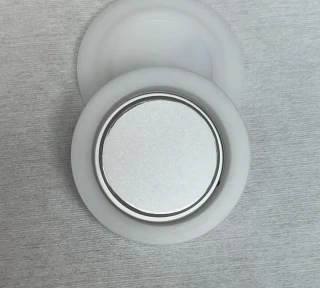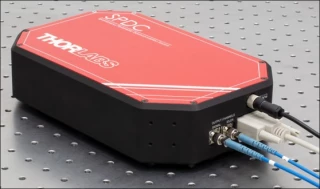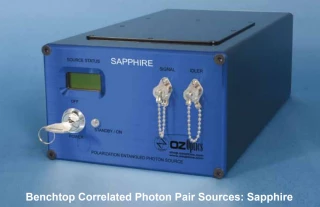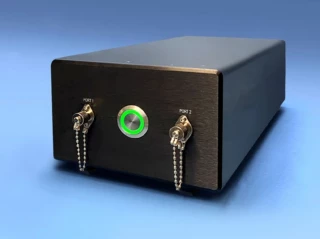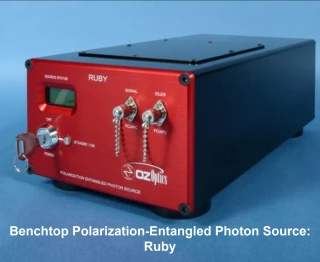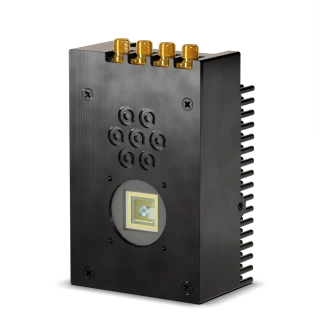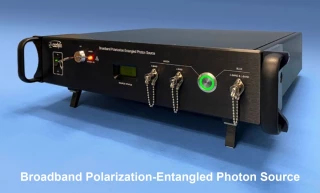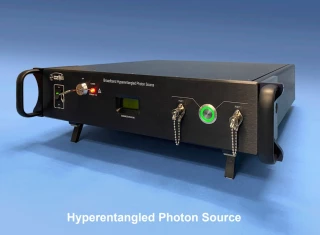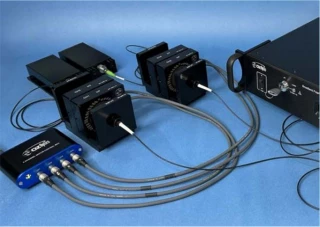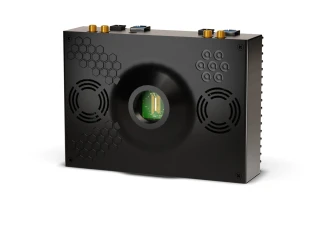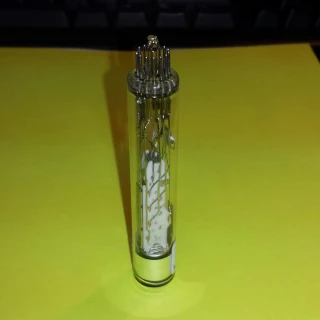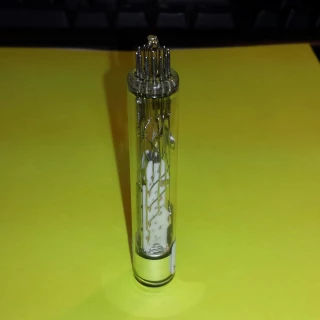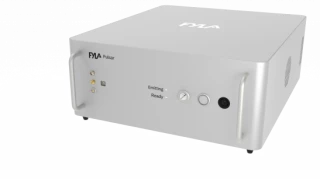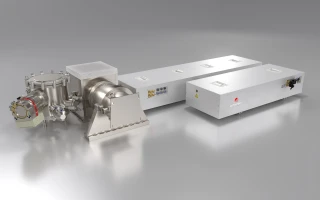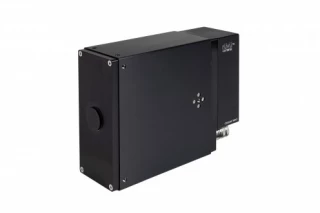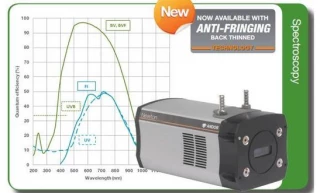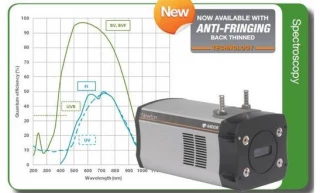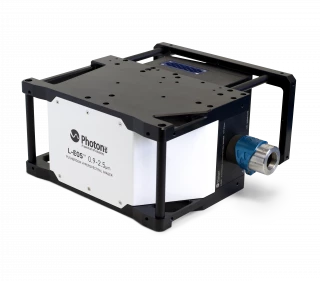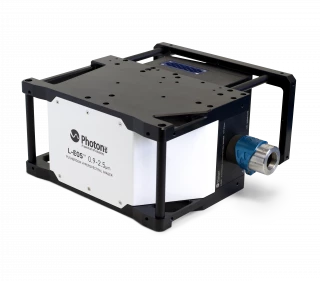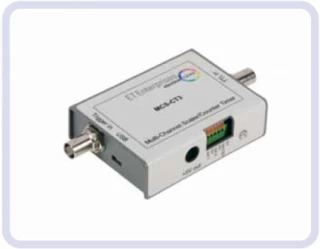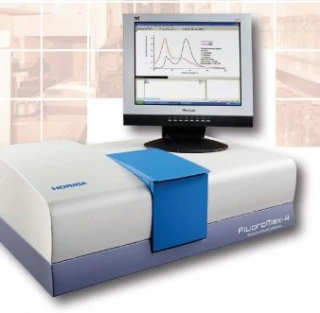1-25 of 65 results for "photons". Did you mean "photonics"?
Search Results
Phosphor Screen
-
Sold by:
NEO INFINITY LTD
-
Ships from:
Israel
Specifications |
|---|
Correlated Photon-Pair Source
-
Sold by:
-
Ships from:
United States
Specifications |
|
|---|---|
| Operating Wavelength: | 810 nm |
| Wavelength Stability: | -2.5 – 2.5 nm |
| Pump Laser Power: | 10 – 150 mW |
| Max Pairs Per Second: | > 450 kHz |
Benchtop Correlated Photon Pair Sources: Sapphire
-
Sold by:
-
Ships from:
Canada
Specifications |
|
|---|---|
| Operating Wavelength: | 810 nm |
| Wavelength Stability: | Not Specified |
| Pump Laser Power: | Not Specified |
| Signal/Idler Degeneracy Wavelength Accuracy: | ±2 nm |
Bright Entangled Photon Sources
-
Sold by:
-
Ships from:
Canada
Specifications |
|
|---|---|
| Operating Wavelength: | 1550 nm |
| Wavelength Stability: | -2 – 2 nm |
| Pump Laser Power: | Not Specified |
| Signal/Idler Degeneracy Wavelength Accuracy: | ±2 nm |
Benchtop Polarization-Entangled Photon Sources Ruby and Emerald
-
Sold by:
-
Ships from:
Canada
Specifications |
|
|---|---|
| Operating Wavelength: | 1560 nm |
| Wavelength Stability: | Not Specified |
| Pump Laser Power: | Not Specified |
| Signal / Idler Degeneracy Wavelength Accuracy: | ±2 nm |
SPAD23 | Photon-Counting SPAD Array
-
Sold by:
-
Ships from:
United States
Specifications |
|
|---|---|
| Sensor Type: | Other |
| # Pixels (Width): | 23 |
| # Pixels (Height): | Not Specified |
| Pixel Size (Square): | 23 um |
Broadband Polarization-Entangled Photon Source
-
Sold by:
-
Ships from:
Canada
Specifications |
|
|---|---|
| Bandwidth: | 120 nm |
| Center Wavelength: | 1566 nm |
| Output Power: | Not Specified |
| Polarization: | Not Specified |
Hyperentangled Photon Source - Telecom-Broadband
-
Sold by:
-
Ships from:
Canada
Specifications |
|
|---|---|
| Operating Wavelength: | 1566 nm |
| Wavelength Stability: | -2 – 2 nm |
| Pump Laser Power: | Not Specified |
| Operating Relative Humidity (% RH): | 5 to 60 % |
Polarization Entanglement Tomography Analyzer
-
Sold by:
-
Ships from:
Canada
Specifications |
|
|---|---|
| Optical Insertion Loss: | 0.75 dB |
| Wavelength: | 1550 nm |
| Repeatability: | 0.1 deg |
| DC Voltage Input: | 5 V |
SPADλ | Photon-Counting SPAD Linear Array
-
Sold by:
-
Ships from:
United States
Specifications |
|
|---|---|
| Sensor Type: | Other |
| # Pixels (Width): | 320 |
| # Pixels (Height): | 1 |
| Pixel Size (Square): | 29 um |
SPAD512 | Photon-Counting Gated SPAD Camera
-
Sold by:
-
Ships from:
United States
Specifications |
|
|---|---|
| Sensor Type: | sCMOS |
| # Pixels (Width): | 512 |
| # Pixels (Height): | 512 |
| Pixel Size (Square): | 16.4 um |
9422B - 29mm Photomultiplier Tube
-
Sold by:
-
Ships from:
United States
Specifications |
|
|---|---|
| PMT Type: | PMT (photomutiplier tube) |
| Wavelength Of Max Response: | 225 nm |
| Wavelength Range: | 110 – 360 nm |
| Rise Time: | 2 ns |
9424B - 51mm Photomultiplier Tube
-
Sold by:
-
Ships from:
United States
Specifications |
|
|---|---|
| PMT Type: | PMT (photomutiplier tube) |
| Wavelength Of Max Response: | 125 nm |
| Wavelength Range: | 110 – 160 nm |
| Rise Time: | 2 ns |
Pulsar - FYLA fiber laser
-
Sold by:
-
Ships from:
Spain
Specifications |
|
|---|---|
| Wavelength: | 1560 nm |
| Repetition Rate: | 10 MHz |
| Output Power: | 100 W |
| Pulse Duration: | 120 fs |
OEM Polarization Entangled Photon Source-Generator
-
Sold by:
-
Ships from:
Canada
Specifications |
|
|---|---|
| Operating Wavelength: | 1550 nm |
| Wavelength Stability: | Not Specified |
| Pump Laser Power: | Not Specified |
| Dimensions: | 192x130x76 mm |
20 eV - 150 eV XUV Beam Line
-
Sold by:
-
Ships from:
Germany
Specifications |
|
|---|---|
| Photon Energy: | 20 eV - 150 eV (300 eV upon request) |
| Wavelength: | 8.5 nm - 60 nm (4 nm upon request) |
| XUV Photon Flux: | up to 10^14 per second |
| XUV Average Power: | up to 330 µW |
HNu 240 EMCCD High-End Adaptive Optics (AO) Optimized Camera
-
Sold by:
-
Ships from:
Canada
Specifications |
|
|---|---|
| Sensor Type: | EMCCD |
| # Pixels (Width): | 240 |
| # Pixels (Height): | 240 |
| Pixel Size (Square): | 24 um |
Newton EMCCD DU970P
-
Sold by:
-
Ships from:
United Kingdom
Specifications |
|
|---|---|
| Sensor Type: | EMCCD |
| # Pixels (Width): | 1600 |
| # Pixels (Height): | 200 |
| Pixel Size (Square): | 16 um |
ANDOR - Newton 971 EMCCD Camera
-
Sold by:
-
Ships from:
United Kingdom
Specifications |
|
|---|---|
| Sensor Type: | EMCCD |
| # Pixels (Width): | 1600 |
| # Pixels (Height): | 400 |
| Pixel Size (Square): | 16 um |
L-EOS 1.7 Hyperspectral SWIR 900-1700 nm
-
Sold by:
-
Ships from:
Canada
Specifications |
|
|---|---|
| Sensor Type: | InGaAs Array |
| # Pixels (Width): | 512 |
| # Pixels (Height): | 640 |
| Pixel Size (Square): | 15 um |
L-EOS 2.5 Hyperspectral SWIR 900-2500 nm
-
Sold by:
-
Ships from:
Canada
Specifications |
|
|---|---|
| Sensor Type: | Other |
| # Pixels (Width): | 256 |
| # Pixels (Height): | 320 |
| Pixel Size (Square): | 30 um |
MCS-CT3 - Multi-Channel Scaler
-
Sold by:
-
Ships from:
United States
Specifications |
|
|---|---|
| Max Count Rate: | 150 MHz |
| Min Pulse Width: | 1.7 ns |
Rof Semiconductor Laser 1550nm Narrow Linewidth Frequency Stabilization Laser Module
-
Sold by:
-
Ships from:
China
Specifications |
|---|
Conquer Semiconductor Laser 1550nm Narrow Linewidth Laser
-
Sold by:
Beijing Conquer Photonics Co., Ltd.
-
Ships from:
China
Specifications |
|
|---|---|
| Laser Type: | Continuous Wave (CW) |
| Fiber Type: | Single Mode |
| Wavelength: | 1550 nm |
| Output Power: | 10 mW |
HORIBA FluoroMax Plus
-
Sold by:
-
Ships from:
United States
Specifications |
|
|---|---|
| Excitation Source: | Incoherent |
| Grating (Excitation): | 1200 groove/mm |
| Blaze (Excitation Grating): | 330 nm |
| Grating (Emission): | 1200 groove/mm |

